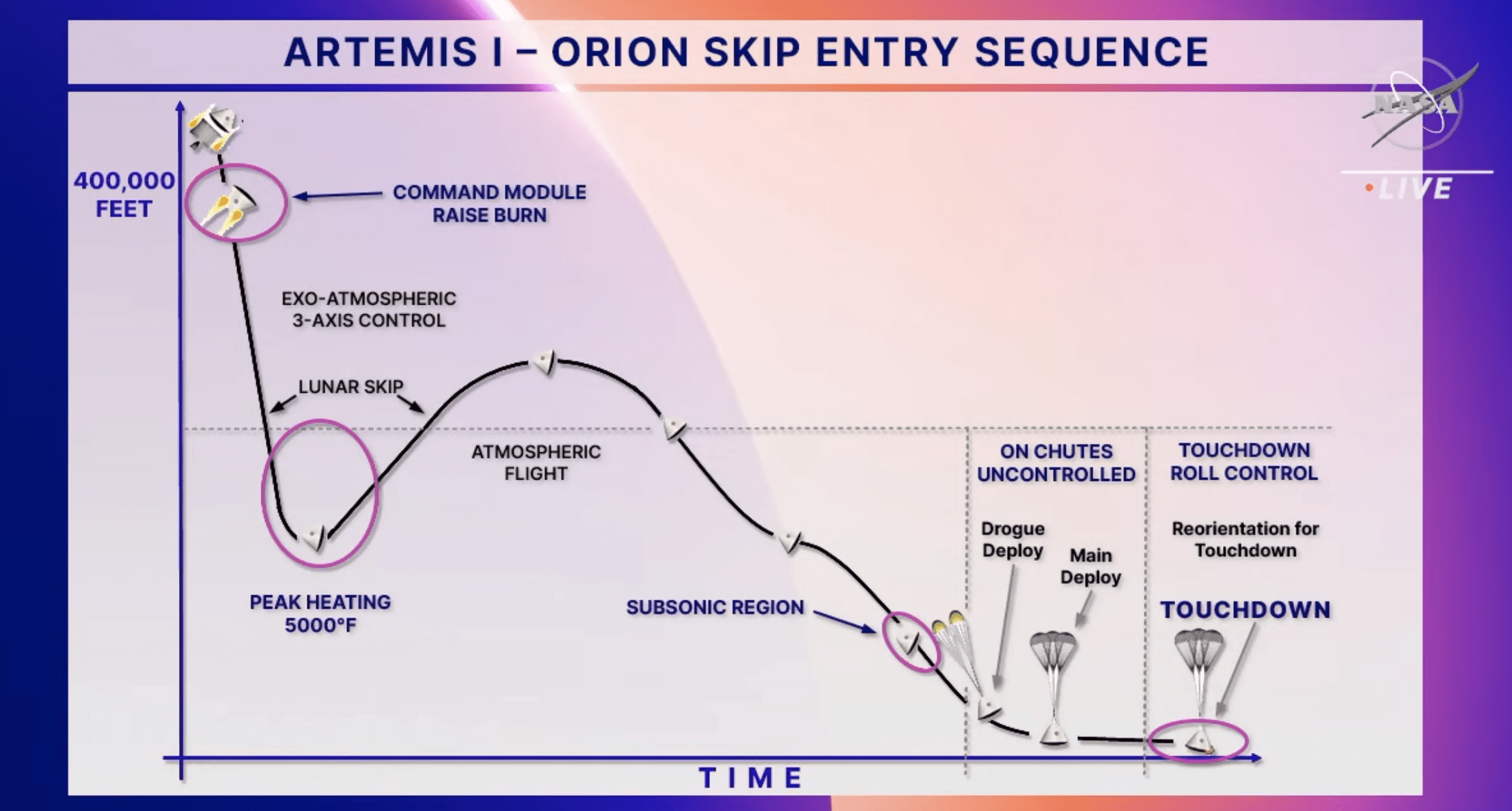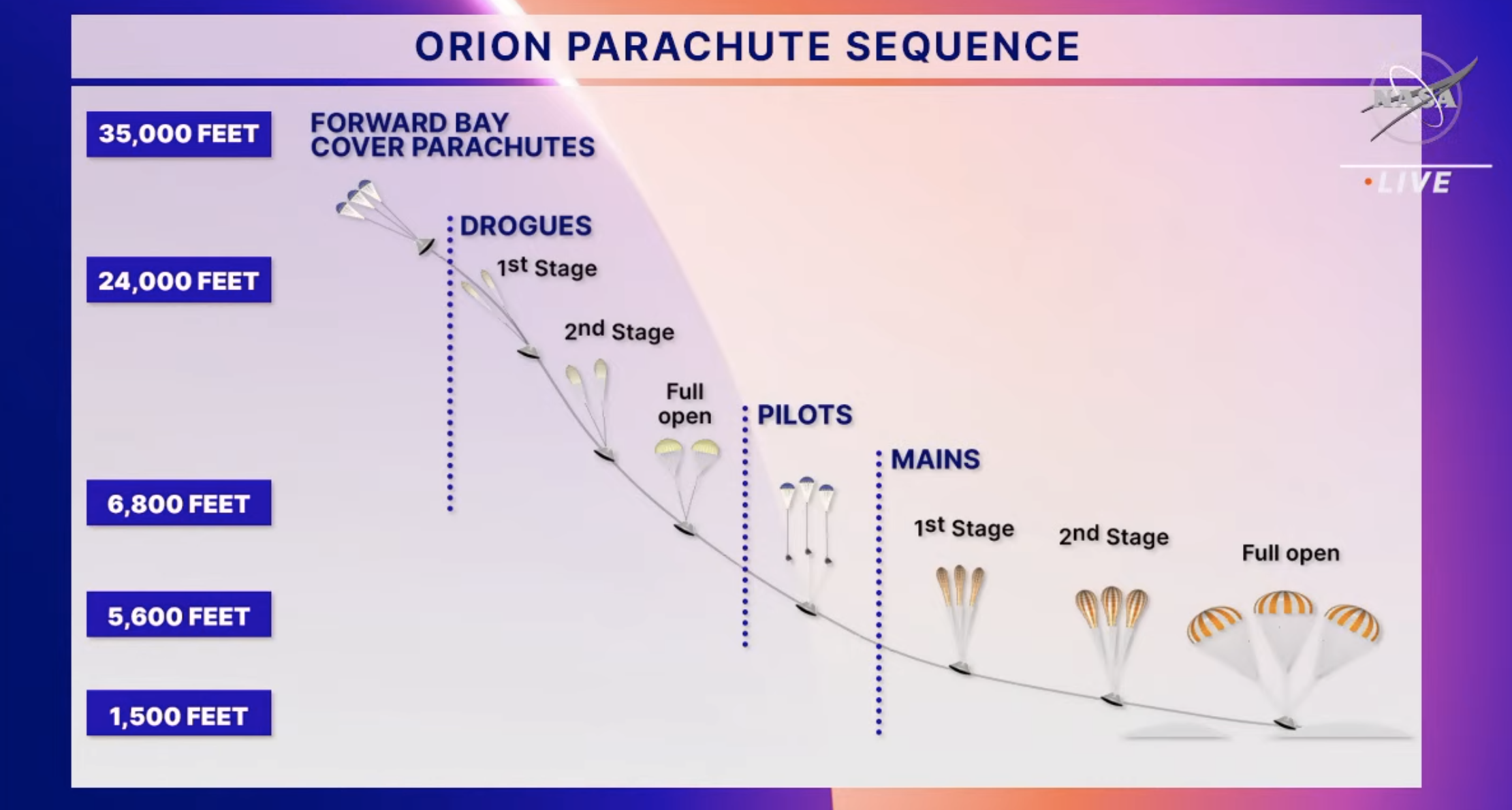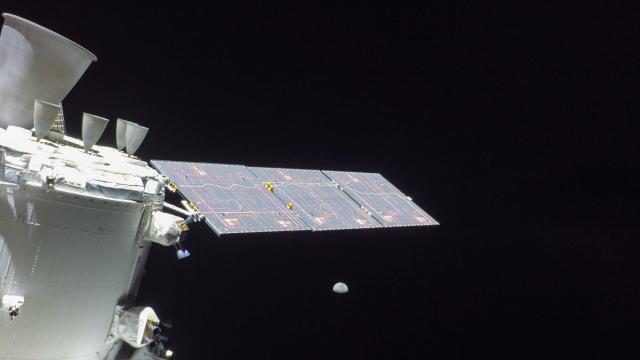All good things come to an end, including NASA’s wildly successful Artemis 1 mission to the Moon and back. At least, it’s been successful so far, as Orion must still perform a harrowing reentry through Earth’s atmosphere. You can follow the action live right here.
NASA’s coverage of this event is scheduled to begin on Sunday at 11:00 a.m. (all times Eastern), with the live broadcast available on NASA TV, YouTube and at the live stream below. The coverage will continue past Orion’s expected landing time, 12:40 p.m., as NASA’s Mission Control in Houston will hand the mission responsibilities over to the Exploration Ground Systems recovery team.
Indeed, the 25.5-day mission is heading towards its inevitable conclusion, with the uncrewed Orion set to discard its trusty European Service Module and then plunge into Earth’s atmosphere at speeds reaching 32,187 km per hour (32,100 kilometers per hour). No spacecraft built for humans has ever arrived back at Earth with such speed.
To ease the burden, NASA will attempt a skip reentry, in which the capsule will perform a reentry, and then “bounce” off the atmosphere and temporarily return to space before taking a second plunge. No spacecraft built for humans has ever performed a skip reentry, and it should result in g-forces comparable to a return from low Earth orbit, as Jim Geffre, Orion vehicle integration manager, told reporters yesterday.

The team, in addition to testing this reentry technique, will evaluate Orion’s guidance system and heat shield, which will have to endure temperatures in excess of 5,000 degrees Fahrenheit. A series of parachute deployments will slow the craft down to a manageable 20 mph (32 km/hr), allowing it to perform a gentle splashdown in the Pacific Ocean.
More on this story: What will happen once NASA’s Orion splashes down on Sunday
A recovery team will be waiting nearby, approximately 100 miles (160 kilometers) west of Guadalupe Island near Baja, California. The original landing site, an area to the west of San Diego, was a no-go due to weather constraints, Judd Frieling, Artemis flight director, told reporters yesterday. Mike Sarafin, Artemis mission manager, said a cold front is moving in, which could bring precipitation and violate the weather criteria, as “we don’t want to have splashdown in the rain.” The other concern was that the cold front would introduce winds and choppy waters into the equation, which would not be ideal for recovery operations. The newly chosen area is 345 miles (556 km) up range from the original site, but “well within our test objectives,” Frieling said.

Riding in inflatable boats, the team will disembark from a U.S. Navy dock ship and intercept the capsule. The recovery team, in addition to towing the capsule back to the awaiting ship, will record environmental data, measure the capsule’s temperature, and attempt to recover Orion’s parachutes and jettisoned forward bay cover. The recovery could take anywhere from three to five hours. After returning to land, Orion will be packed into a truck and sent to Kennedy Space Centre in Florida for detailed inspections.

For all this to happen, however, Orion must survive atmospheric reentry. “We are wrapping this mission up,” Sarafin said, but “we are not letting our guard down.” The Artemis mission manager said he’s “encouraged” by the vehicle’s overall performance and that he’s looking forward to achieving the mission’s final two main objectives: a demonstration of Orion’s ability to tolerate lunar reentry conditions and its recovery after splashdown.
The inaugural Artemis mission produced an abundance of memorable moments, including the debut launch of NASA’s Space Launch System (SLS) rocket, a pair of close lunar flybys, and a new distance record for a passenger spacecraft. The visuals that Orion sent back were truly stunning. We’ll have to wait for 2024 at the earliest to see these views again, as that’s when NASA plans to launch the successor mission, Artemis 2.
More: Sore Loser Bezos Is Hoping for a Second Chance to Build NASA’s Lunar Lander
